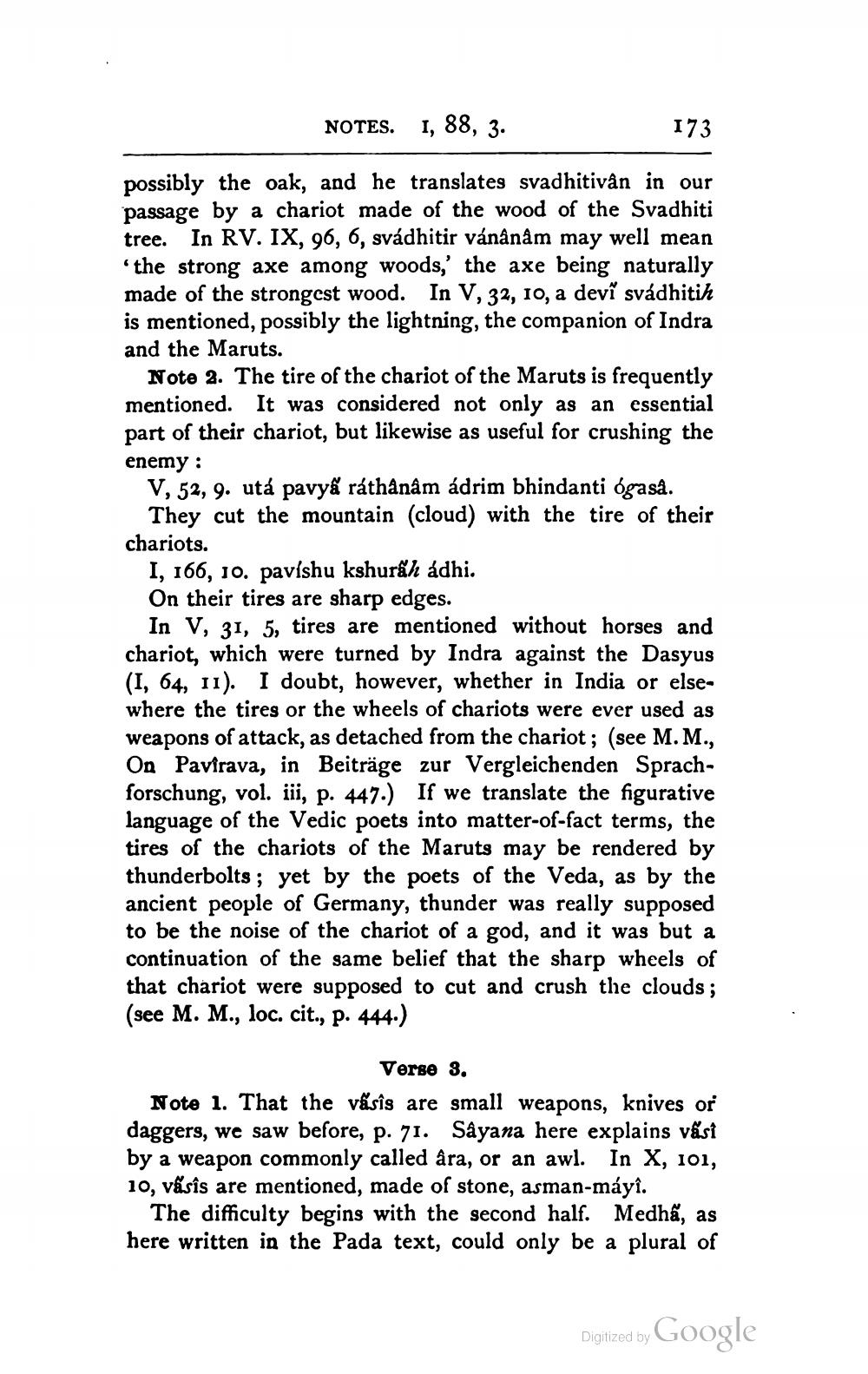________________
NOTES. 1, 88, 3.
173
possibly the oak, and he translates svadhitivân in our passage by a chariot made of the wood of the Svadhiti tree. In RV. IX, 96, 6, svádhitir vánânâm may well mean 'the strong axe among woods,' the axe being naturally made of the strongest wood. In V, 32, 10, a devi svádhitih is mentioned, possibly the lightning, the companion of Indra and the Maruts.
Note 2. The tire of the chariot of the Maruts is frequently mentioned. It was considered not only as an essential part of their chariot, but likewise as useful for crushing the enemy :
V, 52, 9. utá pavyä ráthânâm ádrim bhindanti bgaså.
They cut the mountain (cloud) with the tire of their chariots.
I, 166, 10. pavishu kshuråh adhi. On their tires are sharp edges.
In V, 31, 5, tires are mentioned without horses and chariot, which were turned by Indra against the Dasyus (I, 64, 11). I doubt, however, whether in India or elsewhere the tires or the wheels of chariots were ever used as weapons of attack, as detached from the chariot; (see M.M., On Pavirava, in Beiträge zur Vergleichenden Sprachforschung, vol. iii, p. 447.) If we translate the figurative language of the Vedic poets into matter-of-fact terms, the tires of the chariots of the Maruts may be rendered by thunderbolts; yet by the poets of the Veda, as by the ancient people of Germany, thunder was really supposed to be the noise of the chariot of a god, and it was but a continuation of the same belief that the sharp wheels of that chariot were supposed to cut and crush the clouds; (see M. M., loc. cit., p. 444.)
Verse 3. Note 1. That the vâsîs are small weapons, knives or daggers, we saw before, p. 71. Sâyana here explains vási by a weapon commonly called ara, or an awl. In X, 101, 10, vâsîs are mentioned, made of stone, asman-máyî.
The difficulty begins with the second half. Medhã, as here written in the Pada text, could only be a plural of
Digitized by
Digitized by Google




